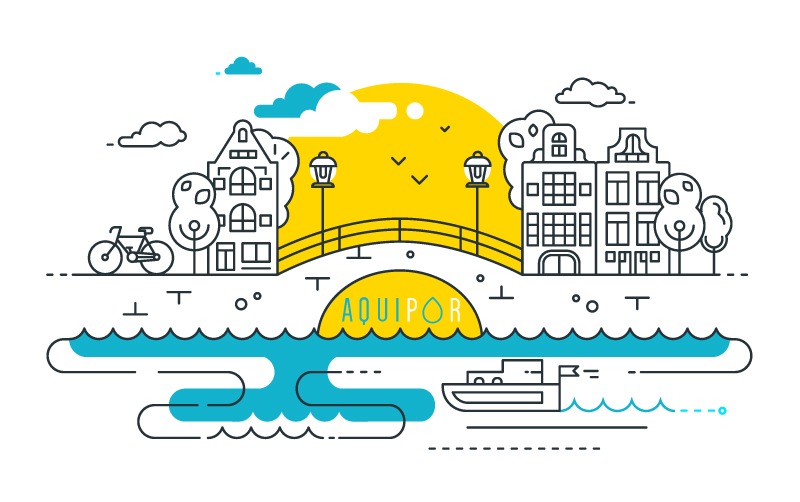Fly-ash is a hazardous environmental byproduct from coal-fired electric power generation and industrial boilers.
For decades, utilities have disposed of coal ash dangerously, dumping it in unlined ponds and landfills where the toxins leak into groundwater. Some estimates state there are over 3 billion tons of legacy and “fresh” fly-ash waste in the U.S. alone. Many landfills and collection ponds are near large cities.

According to industry’s own data, 94% of the coal ash ponds in the United States are unlined. Unlined ponds are contaminating groundwater with toxins above levels that the U.S. Environmental Protection Agency deems safe for drinking water.
Legal and technical experts from Earthjustice, the Environmental Integrity Project, and partner organizations located and analyzed the data disclosures from utilities that report groundwater monitoring data and found that 91% of these plants are contaminating groundwater with toxic substances at levels exceeding federal safe standards.
AquiPor’s permeable concrete can be used to sequester various harmful industrial waste by combining these materials with our catalytic binder. One such waste material we have been successfully testing in our mix designs is fly ash.
There are environmental and economic advantages to recycling this waste back into our concrete, but in addition to that, it creates some emerging properties that are very compelling for our permeable technology.
How about that...taking care of industrial waste that is contaminating groundwater and putting it into new, useful permeable material that can help improve groundwater and freshwater in our cities?!
If you’ve been following AquiPor for even a short amount of time, you know that we are developing a new type of permeable concrete that would help alleviate stormwater pollution in cities, and we’re really excited about that. It’s not every day you invent a technology that could not only make life better for people in cities but can also directly help make our communities more resilient to the impacts of climate change.
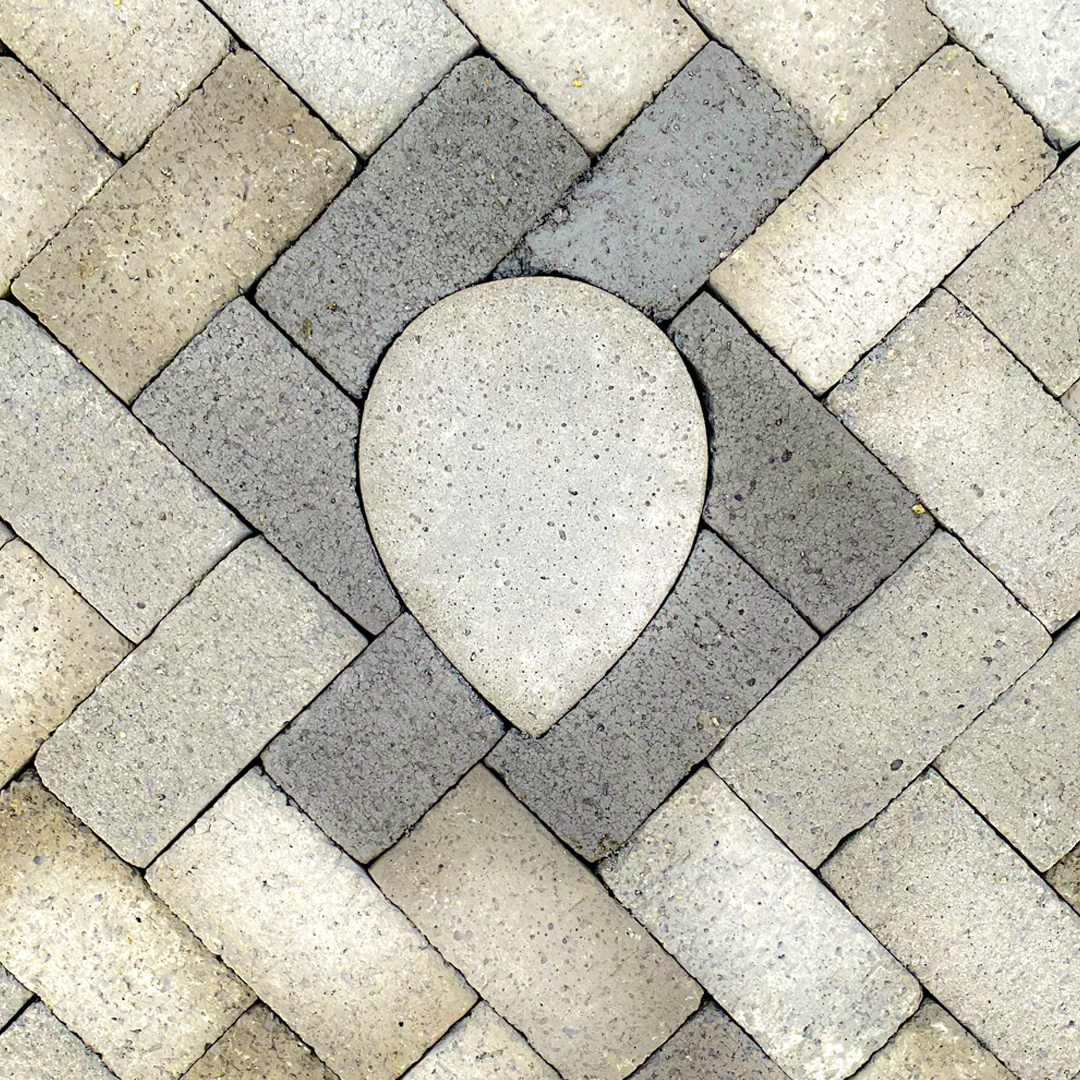
In short, our permeable concrete can help ease the pressure on already overused sewage systems and reduce pollution in the environment by providing a better way to handle rainwater and snow runoff. Instead of allowing polluted stormwater to run off of paved surfaces and into storm drains, our permeable pavers will allow this water to flow down through the material and into subsurface layers before naturally recharging groundwater.
There are many applications for our permeable concrete, and we thought it would be fun to share some ideas we have that you might not have thought of. Here are 5 possible applications of our permeable concrete:
1. Swimming pools: Not the actual swimming pools, that would be kind of silly to have porous material in your pool, but imagine that you have permeable pavers surrounding the pool. Excess water gets drained from around the pool, making it a safer place for your kids. Now, instead of yelling at your kids to “stop running around the pool!”, you can yell “kids, run and get me another beer!”. Honestly though, having less water around makes it less slick and therefore a lot safer for those you love. Just imagine!

2. Parking lots: You may not even notice it, but those random grassy swales in retail and commercial parking lots are actually there to deal with stormwater runoff. Instead of bulky, space consuming swales or stormwater ponds, AquiPor permeable pavers can take their place to manage stormwater without taking up all that usable space! Btw, did you know that 5.5% of all developed land in the U.S. is made up of impervious parking lots?! This is a problem we know can be reversed!
3. Sidewalk Panels: There are millions of miles of sidewalks throughout the U.S. and almost all of them are impermeable. What better way to manage stormwater from the street than to direct it to permeable sidewalks and manage it right there?! Now of course, these systems need to be designed and engineered to be structurally sound and to prevent road settling but we’ve considered that too. Our “steady-state”, porous detention tanks go underneath our permeable sidewalk panels and regulate how fast stormwater goes back into the ground based on the natural hydrology of those soils. As part of a fully engineered design, we can literally turn neighborhoods into stormwater infiltration corridors. Neat huh?
4. Bike lanes and walking paths: As more and more cities embrace micro-mobility and pedestrian friendly neighborhoods, why not turn the designated bike lanes and pathways in cities into permeable surfaces? Any opportunity to transform impervious pavement into permeable surfaces not only helps with stormwater and flooding issues, but it’s also known that permeable paving can help eliminate urban heat island. Pedestrian friendly + stormwater management + elimination of urban heat island = WIN WIN WIN!
5. Driveways and residential patios: Using permeable pavers in a residential driveway and / or patio can help alleviate all manner of groundwater and stormwater runoff issues, while also safeguarding local water quality by protecting against the infiltration of pollutants. In cold climates, electric or hydronic heating systems in conjunction with a well-designed permeable paver system can not only eliminate snow and ice, but it can get that precipitation back into the ground naturally. Of course, these system designs cost more but it goes to show you what’s possible with permeable concrete pavers!

At AquiPor, we’re hard at work developing our technology to meet the standards necessary for each and every one of these applications. What else haven’t we thought of?! Get in touch with us and let us know!
With climate change ever-present, it’s time to consider the value of stormwater and treat it like the freshwater asset that it is.
Even in the drought-ridden American West, climate change doesn’t necessarily reduce the amount of water an area receives, but it definitely has changed how, when, and in what form it arrives. This means more volatile precipitation, less snowpack, more flooding, higher temperatures, and shorter wet seasons.

The impact that this is having on our watersheds is alarming. All of the water that we consume comes from a watershed. Watersheds consist of two distinct parts: surface waters - which are streams, rivers, and lakes - and groundwater, which is stored in underground aquifers.
Most areas, at least in the West, rely heavily on groundwater. The need to replenish these underground stores is critical, and every drop of stormwater that becomes runoff instead of seeping back into the ground is a missed opportunity.
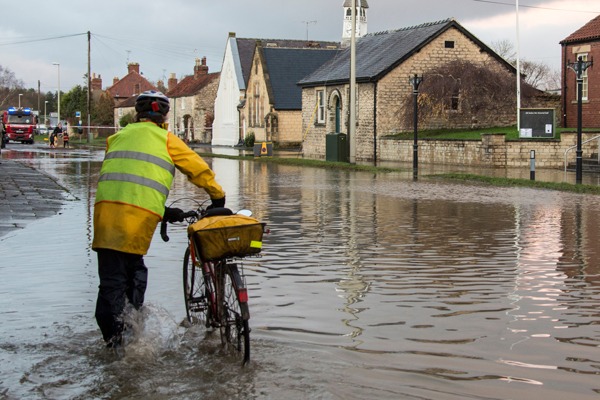
In most U.S. cities, where upward of 40% of the urban landscape is paved over with impervious surfaces, huge volumes of runoff are generated each time it rains. There is an enormous opportunity for cities to adapt to the new normal of climate change by turning impervious surfaces permeable. In this era of flashier rain events, where wet weather events can be extreme, volatile, and quick, cities can become more resilient by prioritizing the use of permeable paving and green infrastructure. Not only can it help mitigate urban flooding and runoff pollution, but it can readily get much needed precipitation back into the ground.
The current state of stormwater in the United States presents a unique challenge for design professionals of the present and future. The increased flooding and pollution problems associated with our changing weather patterns has become more noticeable with the passing of each season. The question now really is how bad will these problems become as the climate continues to change? For starters, recent studies indicate stormwater infrastructure built in the last 50 years was done so with data that did not account for climate change. In addition, infrastructure in 43 states are currently designed with data collected no sooner than 2015. Alarming for communities in the Pacific Northwest, rainfall records representing industry design storms date all the way back to 1973. The issues will continue to accelerate as long as The National Oceanic and Atmospheric Administration (NOAA) Atlas 14, which provides the data that determines design storm criteria, looks at the past and not the future. But even with the most up-to-date rainfall information, climate scientists warn that infrastructure is still likely to fail. The growing awareness behind these issues has brought forth $1.4 billion in direct federal funding over 5 years to the EPA Sewer Overflow & Stormwater Reuse Municipal Grant Program, reflecting only a small portion of an infrastructure bill that will directly impact stormwater improvement projects across the nation. The journey to bridge an $8 billion stormwater funding gap is now underway.

To help ease the fragmented planning efforts across the US, amendments to the Clean Water Act continue to legislate integrated planning, which identifies efficiency from separate wastewater and stormwater programs to best prioritize capital investments while achieving human health and water quality objectives. This holistic approach to planning builds community engagement, aligns objectives, and emphasizes a preparedness for change. The is a total of 30 integrated plans developed throughout the United States, a number expected to grow significantly through the decade.
Since 2015, the AquiPor team has recognized green infrastructure (GI) as a critical component to integrated planning efforts and are pleased to see this reflected in policy. Having said that, the current definition of GI as presented in the Clean Water Act falls short of incorporating the elements of integrated planning. GI is currently defined as "a range of measures that use plant or soil systems, permeable pavement or other permeable surfaces or substrates, stormwater harvest and reuse, or landscaping to store, infiltrate, or evapotranspirate stormwater and reduce flows to sewer systems or to surface waters." Defining green infrastructure simply by its performance characteristics detracts from the overall value of integrated planning. We aren't the only ones that feel this way. A recent study by The Frontiers of Ecology and the Environment reviewed 122 plans from 20 US cities, finding that city planning often fails to explicitly define green infrastructure, but when it does, stormwater concepts of GI are much more prevalent than landscape or integrative concepts. When defined, functions of GI are primarily hydrological. More functional diversity was found in landscape and integrative definitions of GI. In addition, stormwater concepts surrounding GI engage in greenwashing. The study calls for a broadened definition, one that focuses on the relations between ecological and built infrastructure systems to facilitate the production of social benefits. The review goes on to suggest the following definition : “A system of interconnected ecosystems, ecological–technological hybrids, and built infrastructures providing contextual social, environmental, and technological functions and benefits. As a planning concept, GI brings attention to how diverse types of urban ecosystems and built infrastructures function in relation to one another to meet socially negotiated goals”. We believe this broadened definition of GI incorporates the elements of integrated planning far greater than the one that currently sits in legislation.

AquiPors ecological-technological approach to stormwater management helps to redefine GI by incorporating current infrastructure improvement needs and applying them into a singular retrofit design. By simply modernizing our nation's sidewalks, we can re-imagine transportation by evolving complete street concepts, utilize existing gray infrastructure as real estate for a utility housing corridor, and decentralize the basic needs of our communities with a combination of ecological and built systems intended to thrive in the face of a changing climate. Resilient infrastructure requires a new and innovative approach for tomorrow, and AquiPor is excited to meet this moment.
AquiPor had an amazing year in 2020, learn from our CEO Greg Johnson about our historic year here at AquiPor.
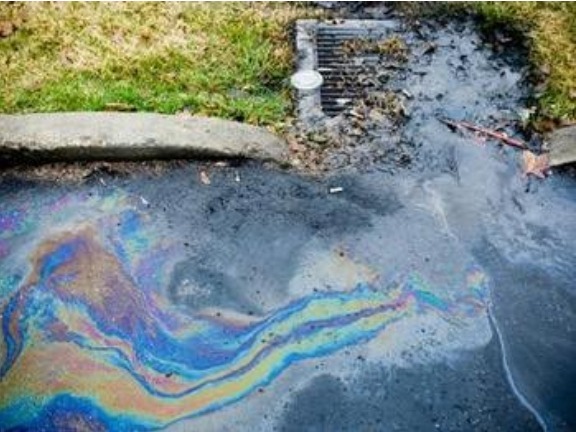
“The way you can identify a broken paradigm,” says George Gilder, “is that the problem gets worse the more money you spend on it.”
George Gilder is a futurist and a technology prophet of sorts. I’m sure George didn’t have U.S. water infrastructure in mind when he made the comment above, but it certainly applies. Crumbling infrastructure and unpredictable weather events are stressing urban water systems to the brink of failure, with regulators calling for more than $700 billion in capital improvements for our nation’s water infrastructure over the next few years.
Hefty investment is needed in water infrastructure to ensure a clean, more secure water future. But simply throwing capital at larger versions of outdated solutions is bad policy. You don’t put a band-aid on a puncture wound.
The average citizen doesn’t think much about it, but pollution from stormwater runoff is arguably the most pervasive environmental issue that cities face today. Ironically, about 860 municipalities around the U.S., discharge raw sewage into clean waterways by design. These old combined sewer systems are forced to handle sewage, wastewater, and stormwater within the same arrangement. So when rainfall can’t soak into the ground, it runs off of pavements and into stormwater collection drains by design.
Outdated Design
Relying solely on this type of water infrastructure may have been feasible decades ago and before cities were sprawling and caked with pavement. Today, our cities have urbanized to the point where non-draining, hard surfaces make up the overwhelming majority of land cover. Three-quarters of Philadelphia, for example, is impervious. So when it rains, huge volumes of runoff finds its way to stormwater drains, picking up every pollutant on the pavement along the way. The more pavement, the more polluted runoff for these combined sewer systems to handle.
Pavement is ubiquitous because it’s useful. And until Elon Musk’s Hyperloop arrives or we’re traveling like the Jetsons with Point-to-Point Aerial Transport, pavements in the form of streets, sidewalks, and parking lots will continue to be crucial for urban mobility and transporting people and goods. So perhaps we should rethink how we design stormwater infrastructure to account for this. It probably starts with an understanding that the old approach of “moving water out” hasn’t just led to mass pollution of waterways, it’s also increased the likelihood of major flooding….and worse still, large coastal cities are literally sinking as aquifers get robbed of natural recharge.
Time for a Paradigm Shift
From my vantage, there is a general feeling of cities scrambling to become more “resilient” as the climate alarm shrieks. But like any meaningful issue, the water problem can’t be solved just with politician’s logic — “we must do something. This is something. Therefore we must do this!” Because by itself, this is proving to be ineffective.
Fortunately, it’s possible to innovate our way to a cleaner, more secure water future. And while “innovation” usually connotes the latest new technologies, it’s the large governing institutions that hold the key to innovation. The key then, is for these institutions to simply embrace it.
Cities, regulators, and large institutions can be painfully path dependent when it comes to embracing new approaches. There are good reasons for this, which we won’t get into here. Fortunately, we’re starting to see progress from some cities as they make more meaningful investments in green infrastructure. We’re seeing vitality in the private sector with an array of startups advancing various software and hardware technologies for monitoring runoff and sewage overflows. There are new permeable materials being developed that can manage stormwater right on-site, returning it naturally into the ground below. And there’s even creative early stage financing arms, helping connect these innovative startups with the capital they need to provide their solutions to the marketplace.
We need more of all of this because what’s at stake is tremendous. Private companies need to continue to relentlessly innovate, capital needs to flow to the development of these ideas, and institutional decision makers need to take a shot on new technologies and approaches when given the chance. It’s time to shift the paradigm because a purported $1 Trillion dollar need for improving water infrastructure is a $1 Trillion opportunity to sustain our most valuable resource.
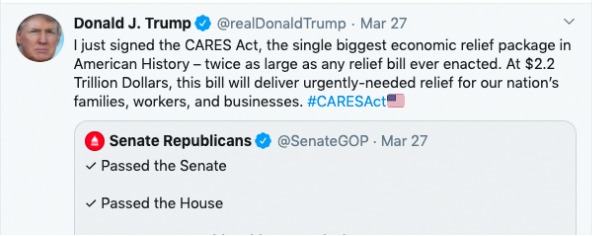
The Yuge CARES Act Stimulus Bill earmarks almost $500 Billion for large corporations.
Just like that, the most expensive stimulus measure ever taken was signed into action. As individuals and small businesses wait for the crumbs, corporate lobbyists are lined up at the $2.2 Trillion feed trough to help “save their industries”.
It’s hard to imagine how another round of huge corporate bailouts will jumpstart the economy. If we’re to recover from this, it will start with rebuilding durable national assets and creating new jobs doing it. That’s not going to happen by bailing out the airline industry. It’s going to happen at the local level with smart infrastructure investment.
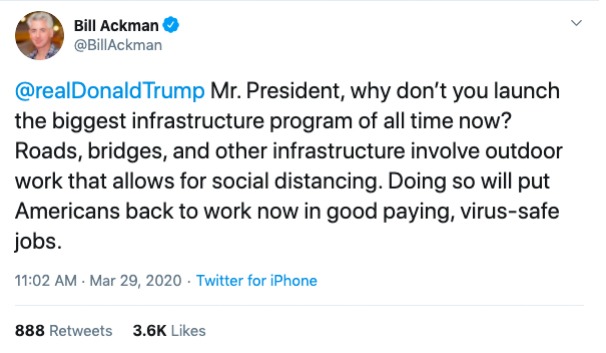
At least one billionaire hedge fund manager agrees.
Often taken for granted, physical infrastructure assets are crucial for a well-functioning society.
As this crisis has unfolded over the past couple weeks, it’s made me notice just how valuable local infrastructure is and the role that local governments play in making sure it functions. Municipalities provide the services, resources and infrastructure to keep communities safe. Uninterrupted water, sanitation, and emergency services are nothing short of modern miracles.
They are also an afterthought for federal funds, even as cities risk going broke.On the heels of this pandemic “shock”, it’s pretty obvious the U.S. needs to get serious about better preparing our cities for imminent surprises. Whether it’s a virus or Hurricane Katrina, the U.S. ought to get familiar with future-proofing: the process of anticipating the future through the development and application of methods that can minimize the stresses of future events.

More storms are coming: Whether it’s a novel virus or a hurricane, the U.S. needs to take the concept of “future-proofing” very seriously.
And what better way to do this than to begin investing immediately in the improvement of dilapidated and outdated U.S. infrastructure assets. The back-and-forth about infrastructure has been going on for so long in our nation’s capital that it has become a running joke. What’s not funny though is reading a D+ on America’s Infrastructure Report Card.
The group that puts out this Infrastructure Report Card report is the American Society of Civil Engineers. They estimate that the U.S. is on track to invest only half of what is needed in infrastructure over the next decade.
Even in normal times infrastructure investment should be a key component of any fiscal stimulus plan. It’s reported that a $250 billion annual investment in infrastructure could create 3 million new jobs in the first year alone. A package stretched out over ten years not only provides immediate economic stimulus, but also a solid foundation for further economic development down the road. A comprehensive, equitable, and climate-smart package that improves job quality and fixes broken assets is a no-brainer.
Treasury yields are below 1% making federal borrowing the cheapest it’s ever been. So get to it Washington. The challenges that we face in the 21st century can be solved. But not with the same path-dependence and risk-aversion that got us in this mess.
